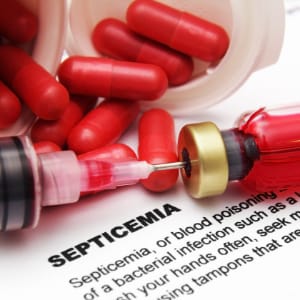Sepsis Awareness Month
 Sepsis is responsible for more than 270,000 deaths a year in the United States. Although 65% of Americans say they know the word “sepsis,” only 12% can identify the most common symptoms. September is sepsis awareness month. Take the time this month to familiarize yourself with sepsis so you can recognize it yourself and your loved ones.
Sepsis is responsible for more than 270,000 deaths a year in the United States. Although 65% of Americans say they know the word “sepsis,” only 12% can identify the most common symptoms. September is sepsis awareness month. Take the time this month to familiarize yourself with sepsis so you can recognize it yourself and your loved ones.
 What is Sepsis?
What is Sepsis?
Sepsis is the body’s overwhelming response to infection or injury. It can lead to tissue damage, organ failure, amputations, and death. Your immune system usually works to fight germs and prevent infection, but sepsis occurs when your immune system stops and turns on itself.
When patients develop a set of signs and symptoms related to sepsis they may be diagnosed with the disease. Sepsis progresses to severe sepsis when in addition to these initial signs and symptoms, the patient shows signs of organ dysfunction such as difficulty breathing, low or no urine output, abnormal liver tests, and changes in mental status. Nearly all patients with severe sepsis will require treatment in an intensive care unit (ICU).
While there is no simple test or cure for sepsis, it can be prevented by preventing infections and can be treated successfully in most cases with early recognition and treatment.
Causes and Risk Factors of Sepsis
Sepsis starts with the presence of an infection. The infection can be viral, bacterial, or fungal or even caused by a parasite. This infection can start anywhere in the body from something as small as a cut or bug bite to a larger infection like pneumonia or meningitis.
Sepsis can affect people of all ages and health levels. However, it is more likely to affect very young children, older adults, people with chronic illnesses, and those with weakened immune systems.
Symptoms
The major symptoms of sepsis can be remembered using the phrase “It’s about time.” Watch for these four things:
T – Temperature that is higher or lower than normal.
I – Infection present or have other signs/symptoms of infection.
M – Mental Decline characterized by confusion, sleepiness, or lethargy/difficult arousing.
E – Extremely Ill including severe pain, discomfort, and shortness of breath
Time is of the essence when it comes to sepsis. The risk of death from sepsis increases by as much as 8% for every hour treatment is delayed.
If you see any combination of these symptoms especially if the person has a recent history of a cut, surgery, invasive procedure, or infection, you should immediately call 911 or go to the nearest hospital and let the caregivers know you are concerned about sepsis.
How to Prevent Sepsis
Sepsis cannot always be prevented but there are steps you can take to prevent or treat infection as quickly as possible and be on the look out for sepsis when infection does occur.
- Get Vaccinated. Vaccinations can protect you from contracting certain viral infections that could lead to sepsis.
- Properly care for open wounds. Cuts, scrapes, or other breaks in the skin can allow harmful bacteria to enter your body. Be sure to always care for these wounds by cleaning them as quickly as possible after injury and keeping them clean, monitor them for signs of an infection (redness, warm to the touch, increased pain, discharge from the wound), and consult a doctor if there are signs of infection.
- Take antibiotics correctly when they are prescribed. When you are prescribed antibiotics, be sure to take them exactly as prescribed. Follow all the directions for use, take them on time, finish the full course even if you feel better sooner, and store the antibiotics as directed.
- Wash your hands frequently. Always practice proper hand hygiene with warm water and soap before eating or handling food, after using the bathroom, after blowing your nose or coughing, after touching pets or other animals, and after being outside the home such as at school or shopping.
- Sound the alarm. If you suspect your or a loved one may have sepsis, see a medical professional immediately or call 911 and say “I am concerned about sepsis.”
About Cyndi
Cyndi Whetstone, RN is a Performance Improvement Specialist at Fisher-Titus and is stroke coordinator at Fisher-Titus. Fisher-Titus is a Certified Primary Stroke Center. For more information about sepsis, visit sepsis.org.
